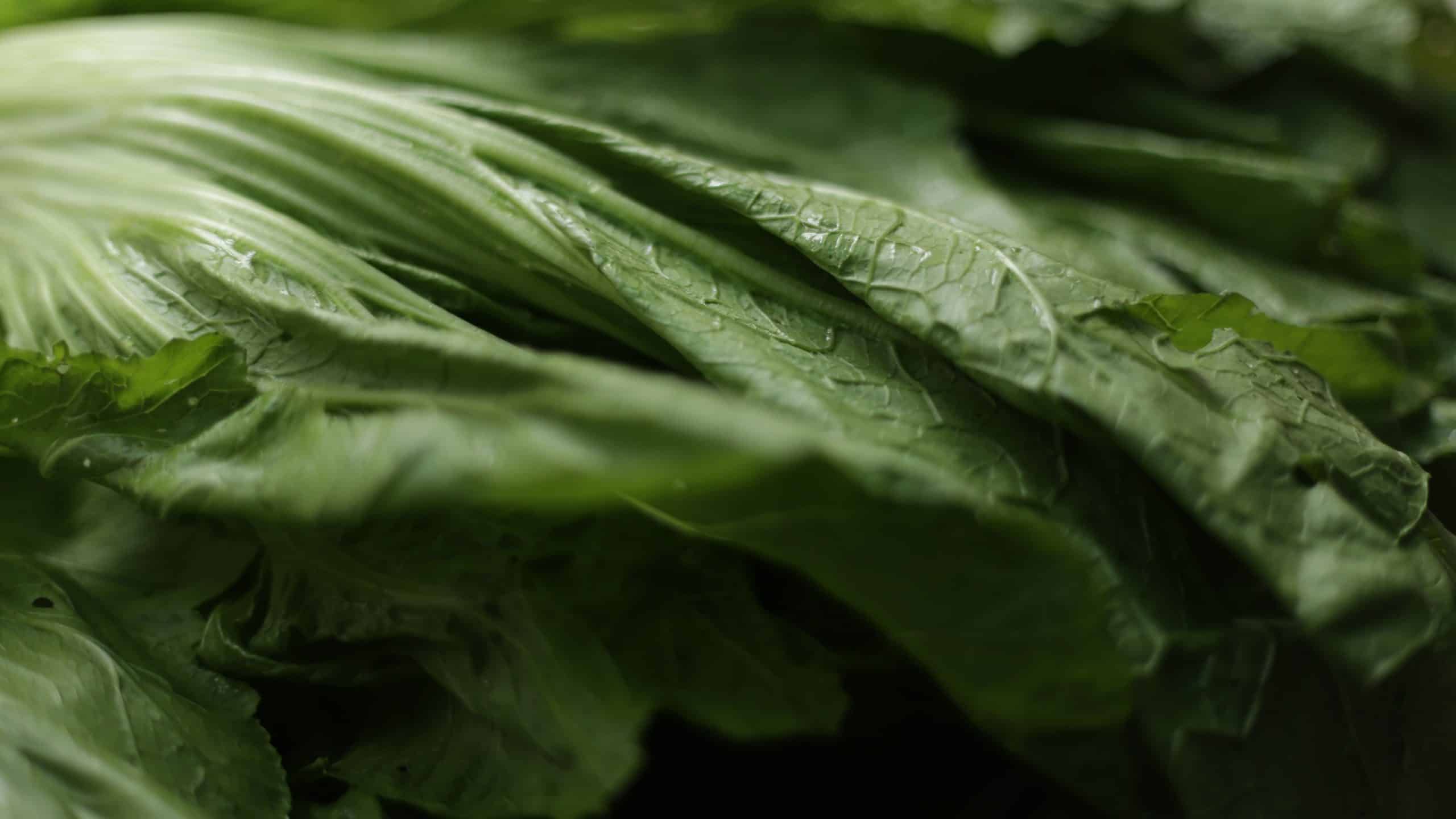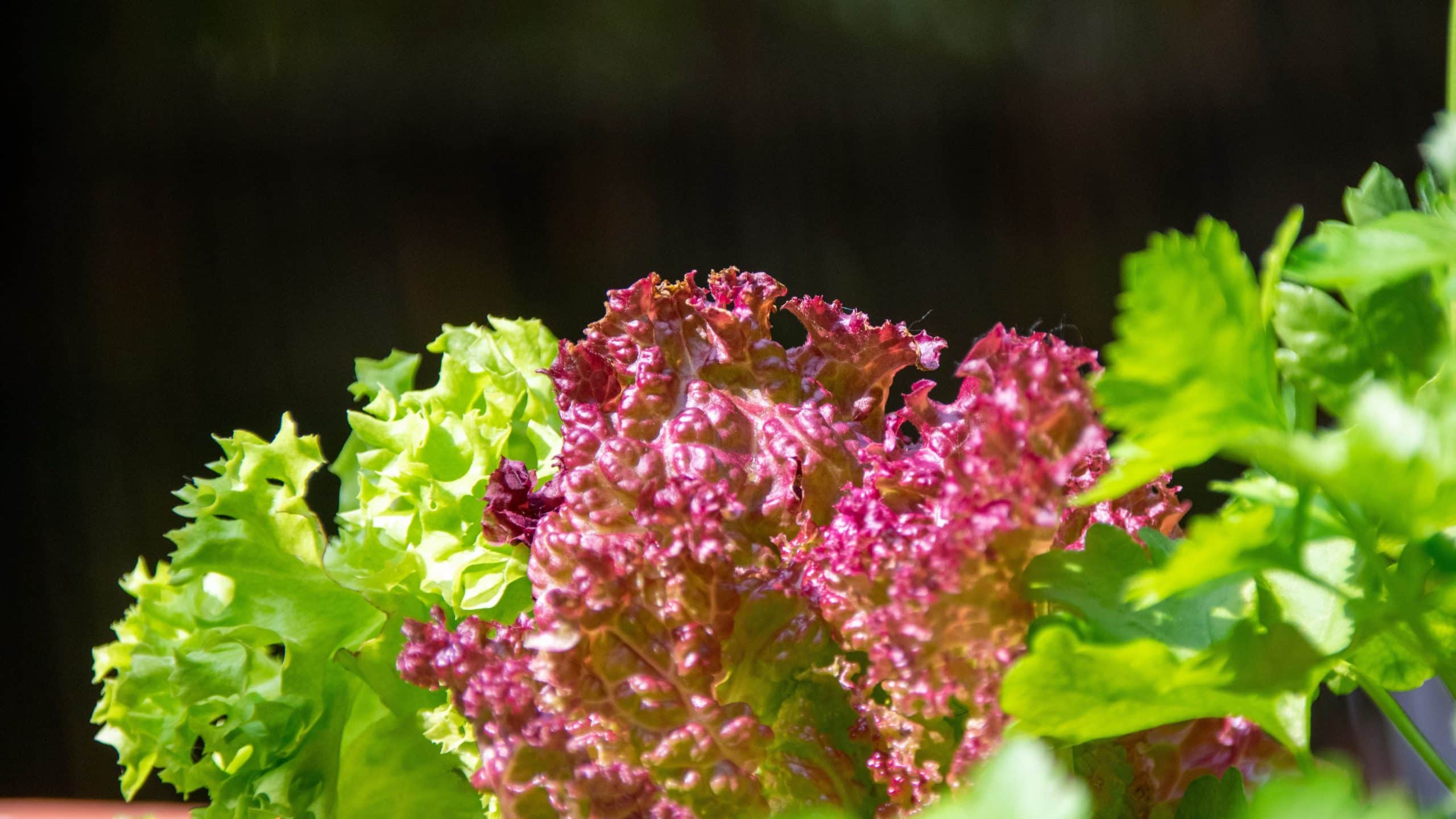Table of Contents
When it comes to storing lettuce from the garden, it’s not just about keeping it cool. First off, you wanna make sure you’ve got all your lettuce leaves clean and dry. Some folks swear by just a simple rinse under running water, but you can also submerge them in a bowl of cold water to remove the dirt and grime and then leave them to dry.
Now, here’s the kicker: to store lettuce properly, you gotta watch out for ethylene gas. This nasty stuff’s what makes fruits and veggies go bad faster. This way, your homegrown lettuce stays fresh and you’re all set for a crisp salad whenever you feel like it.
Harvesting Lettuce: Your First Key Step to Freshness
Harvesting your lettuce is like picking the best time to pull off a band-aid – you’ve gotta know when to do it. Fill up a sink (or a big ol’ bowl) with lots of cold water and submerge your lettuce leaves to wash the dirt off.
But remember, don’t cram all the leaves into the salad spinner. Cut them and spin slowly. Now, before you go and store your lettuce in the fridge, tie it up with a rubber band to keep it fresh.
The Right Time to Harvest
Now, when it comes to harvesting lettuce, timing is everything. Depending on the variety of lettuce you’re growing, the harvest time can vary.
Romaine lettuce is one of the tougher varieties and can be harvested just about any time. Use a sharp knife to cut the head from the stem when it’s about the size of a small football. Iceberg lettuce should be harvested when the head is big and the leaves are tightly packed.
Romaine and Butterhead are hard-leaf varieties, meaning you can harvest them as whole heads. On the other hand, Loose-Leaf lettuce is a soft-leaf variety, and you can just pick off leaves as you need them.
Just remember, the younger the lettuce, the better the taste. So, don’t wait too long to harvest!
Essential Tools for Harvesting
When it comes to harvesting lettuce, you don’t need fancy gadgets. A sharp knife or a pair of garden snips and your hands are all you need. Cut off the lettuce head, separate the leaves and give them a rinse in a bowl of cold water.
Some folks like to add a couple teaspoons of sugar to the water and leave the bowl in the refrigerator overnight. They say it keeps the lettuce crispier.

How to Preserve Lettuce Freshness from Garden to Fridge
Alright, so you’ve harvested your lettuce. Now, how do you keep it fresh and crisp in your fridge? Well, the crisper drawer is a good place to start, but be careful not to squash your salad greens under a heap of other veggies.
Different Lettuce Types and Their Preservation
Your garden might be home to a variety of lettuces like romaine and butterhead. Romaine lettuce, with its luscious crisp leaves, is one of the easiest to store. Just clean, dry and chill it.
Butterhead lettuce, on the other hand, has soft, smooth leaves. You can keep it fresh by storing it in a damp paper towel inside a sealed plastic bag. In the end, it’s all about how you care for your lettuce during and after the harvest.
Tips for Storing Lettuce in the Fridge
When it comes to keeping that lettuce fresh from the garden, look no further than your fridge’s crisper drawer. It’s specially designed to keep the right level of humidity for your veggies, keeping them fresh longer. But don’t go mixing your produce. Lettuce likes its own space.
Now, the other thing to remember here is that not all fridges are same. Some have their humidity levels right as rain, others…not so much. If your lettuce is wilting faster than a May flower in August, you might need to adjust that humidity dial. Remember: too much moisture can be as bad as not enough.
To Wash or Not to Wash?
Iceberg lettuce, that’s the big round one that looks like a cabbage, doesn’t need a bath before storing. Just wipe off any visible dirt and into the fridge it goes in your perforated plastic bag. But here’s the kicker, iceberg lettuce’s leaves are tightly packed, so when you do wash it before eating, make sure to separate and soak the leaves in a bowl filled with cold water. This will remove any stubborn grime hidden in those nooks and crannies.
Romaine and loose-leaf lettuce, on the other hand, they’re a different kettle of fish. These lettuces have looser leaves that love to trap dirt. So, give them a good rinse under running water before storing. Remember to pat them dry with a paper towel to maintain their freshness.
Now, for storing, you can either place the lettuce in a plastic bag or in a reusable baggie. But remember not to overstuff the bags. Add a paper towel in the bag to soak up any extra moisture.
Expert Advice on Reviving Wilted Lettuce
Got a case of the wilted lettuce blues? Don’t fret. There’s a simple trick to bring those lifeless lettuce leaves back to their former glory. All you need is a bowl of cold water and some paper towels.
Just swish the leaves around in the water for a couple of minutes, then drain it, and pat them dry with the paper towels.
This little dip will revive most lettuce varieties, except for iceberg. Its leaves are delicate and can’t handle the cold shock. But, for the others, they’ll perk right up.
The cold water helps to rehydrate the leaves and get them back to their crispy best.

Storing Shredded Lettuce: Do’s and Don’ts
Shredded lettuce is a whole other ball game, folks. Once you shred it, its life span drops faster than a hot potato. You’ve got to be smarter about storing it. Shredded lettuce can be stored in the refrigerator for a week to 10 days at the most.
Keep it in a sealed container to keep it crisp and fresh. But remember, once it’s shredded, you gotta use it quick.
The Right Way to Store Shredded Lettuce
First, make sure it’s completely dry before you store it. Any extra moisture is gonna make it go soggy real quick. Then, when you’re ready to store it, spread it out in a container with a tight-fitting lid. This helps to keep the lettuce crisp and fresh, preventing it from turning into a soggy mess. So go ahead, shred that lettuce.
Using Plastic Wraps on Shredded Lettuce
So what’s the deal with shredded lettuce and plastic wraps? Shredded lettuce has more surface area exposed to air compared to whole heads of lettuce.
Wrapping your shredded lettuce in plastic helps keep it from drying out and turning brown. It’s like a mini greenhouse for your lettuce. But keep in mind, plastic wraps can’t bring back wilted lettuce to life.
So, your best bet is to store your shredded lettuce in one of them fancy storage containers, and then wrap it up in plastic to keep it fresh.
Can You Freeze Lettuce?
The short answer is, yes, you sure can. But before you open that freezer door, hang on. Not all varieties of lettuce take kindly to cold temps. Some might get all mushy and unappetizing.
Freezing lettuce isn’t exactly rocket science but there’s a bit of know-how involved. Lettuce is mostly water, and when you freeze it, the water in the lettuce turns into ice. When you thaw it out, the ice melts, causing the lettuce to lose its crispness.
However, frozen lettuce can still be added to soups or used in cooked dishes. Freezing lettuce is like hibernation. It helps extend the lifespan of your garden-fresh lettuce but it does change its texture and flavor a tad.
The Best Lettuce Varieties to Freeze
Not all lettuce varieties are best for freezing. Your tender, leafy greens like spinach and chard can handle the freeze alright, but your crisper varieties like romaine and iceberg might turn out a bit soggy post-thawing.
Best plan? Freeze lettuce that you plan on cooking or adding to soups and stews. So, the trick is picking the right variety and making sure they’re good and dry before tucking them in the freezer bag.

Turning Your Freshly Harvested Lettuce into Delicious Dishes
Alright, you’ve got your lettuce, whether it’s been stored in the fridge or frozen for later use, and now you’re ready to get cooking. Remember, the taste of homegrown lettuce beats anything you can pick up at the store.
Using Romaine Lettuce
Got some romaine lettuce in hand? Great! You can whip up a classic Caesar salad. All you need is some garlic, anchovies, egg yolks, and olive oil. Combine them, and you got yourself a creamy dressing. Toss it with your romaine hearts and top it off with croutons and parmesan.
But wait, romaine lettuce also makes for a fantastic lettuce wrap. Grill up some chicken or beef, add in some rice or quinoa, roll it up in a romaine leaf and you’ve got yourself a fresh, tasty, carb-free meal.
Using Iceberg Lettuce
Although iceberg lettuce may not be as nutrient-dense as its green leafy cousins, it has its appeal. The crisp texture and mild flavor make it perfect for salads and wraps alike. The first dish that comes to mind is the classic wedge salad. Just cut the iceberg into wedges and drizzle it with some blue cheese dressing, add diced tomatoes, crispy bacon, and chives, and you got yourself a salad.
Next up, try using iceberg lettuce for lettuce wraps. This lettuce is sturdy enough to hold a good amount of fillings without falling apart.
Using Shredded Lettuce
There’s so much more you can do with shredded lettuce, besides topping off your burger. You grab some of that shredded lettuce, mix in some black beans, corn, and some salsa for kick. Top it off with some cheese, if that’s your thing, and bam! You got yourself a spicy Mexican salad!
Another dish to make is Vietnamese-style lettuce wraps. Shredded lettuce, carrots, cucumbers, and some grilled chicken, all rolled up in rice paper. Dip this baby in some sweet chili sauce or peanut sauce, and your taste buds will be doing the happy dance.
A Guide to Lettuce Storage
Now, I hear you saying, “But how do I keep my lettuce fresh after I’ve shredded it?” Well, first off, pat dry those leafy greens. Then, store it in mason jars.
When to Use Fresh Stored Lettuce?
So, how long have you got until the lettuce starts turning on you? Well, with ideal storage conditions, your lettuce should stay fresh for about 10 days. That’s longer than most people would guess.
But the key here is the “ideal conditions”. So no sneaking in warm items next to your lettuce or opening the crisper drawer every few minutes to admire them.
And remember, fresh is always best, so try to use your lettuce as soon as possible to enjoy its full flavor and crispness.
Advantages of Homegrown Lettuce
Now, before you think I’m getting all fancy and talking about things like “homegrown lettuce,” let me tell you, it’s nothing complicated. In fact, growing your own lettuce has its perks.
First off, you can’t beat the freshness. It’s like, you pick it and you eat it. Doesn’t get much fresher than that. Plus, because your lettuce isn’t traveling long distances or sitting on store shelves, it tends to last longer.
And here’s the kicker: you know exactly where it came from. And I don’t mean just the dirt and water it grew in. You know what, if any, chemicals it’s been exposed to. And, in my book, knowing what you’re putting in your body is worth a few green thumbs any day.
Conclusion
Alright folks, when it comes to handling lettuce from your own garden, there’s a lot to remember. Between figuring out the best moment to pull those plants and the right way to store them for crispness, it feels like a full-time job.
But, trust me, once you get the hang of it, you’ll find that your garden gems have a longer shelf life than store-bought, bagged lettuce. Plus, eating lettuce fresh from your own garden has a special kind of satisfaction to it.
Homegrown lettuce not only tastes better, it also lasts longer too. If you ever find your lettuce starting to wilt, remember those amazing tips we talked about. They’re all easy to do and can rescue your greens in no time!

I’m John, a “seasoned citizen” and an avid gardener. I live in Minnesota, where our weather and growing conditions can be harsh and challenging. Over the years, I have learned a thing or two about being successful in growing things. I have curated these tips, which I think are helpful for the beginning gardener and the seasoned experts. If you have feedback, let me know in the contact form.




